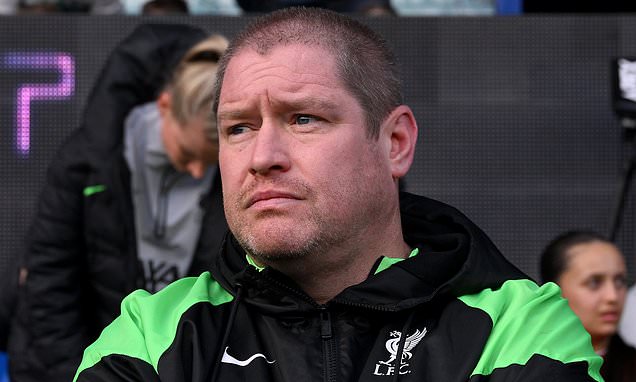**The Dark Reality Behind Embryo Jewelry: A Modern Twist on a Victorian Tradition**
In Victorian Europe, hairwork jewelry was a popular means of remembering the departed. Family or friends would snip lockets of hair, or the dying individual would cut a lock themselves, giving it to loved ones to be preserved in bracelets, rings, and other decorative keepsakes. This deeply personal tradition allowed people to carry a piece of their beloved with them, commemorating those who had passed on.
Today, that tradition has been revived—albeit in a very different and darker form.
—
### The Emergence of Embryo Jewelry
Recently, pro-life advocates have sounded the alarm on a new trend: jewelry made from “leftover” embryos. A number of online jewelry retailers now offer this service, with U.K.-based Blossom Keepsake’s marketing going viral.
One Instagram story from Blossom Keepsake reads:
“POV: you’re an IVF mama who needs to decide what to do with leftover embryos.”
The brand advertises the potential inclusion of embryos in their jewelry, framing the service as a way to “honour this chapter of [the family’s] story by transforming these embryos into timeless pieces.” Customers can request the release of their embryos from the IVF clinic, send them to the jeweler, and receive their custom order 8-10 weeks later.
At first glance, this may seem like a modern equivalent to the Victorian tradition of hairwork. But it’s really something far darker.
—
### Dystopian, Not Victorian
Blossom Keepsake and similar retailers are clearly attempting to recognize the emotional weight involved in the creation of embryos for IVF or surrogacy. Fertility clinics typically create more embryos than can be implanted, leaving intended parents with difficult decisions: continue paying storage fees to keep frozen biological children on ice; offer them up for “embryo adoption”; or destroy the remaining embryos.
Blossom Keepsake seems to soften the blow of the third option:
“When storage is ending and donation does not feel right, there is a gentler way to honour what you created.”
Though parents will never meet these unborn children, they can carry their remains with them through commemorative necklaces or rings.
But this raises a troubling question:
**Do people belong inside jewelry?**
This strange question arises because our culture has failed to ask and answer the deeper, preceding questions:
– Should human beings be frozen in cryostorage?
– Should fertility be treated as a consumer good?
– Is there a right to parenthood and children?
—
### What Do We Owe to Embryos?
It’s deeply unfashionable to apply reason to emotionally charged issues like IVF. In fact, it’s nearly impossible to reach this point in face-to-face conversations, as people tend to focus on secondary questions—such as whether dead embryos belong in jewelry—instead of addressing the fundamental ones.
Yet, the primary questions must be confronted to gain moral clarity:
**Are embryos persons?**
The science is astoundingly clear. The term “embryo” refers to the phase of human development from conception up to about eight weeks, after which the term “fetus” applies. From the moment of conception—whether in utero or in a laboratory—this new being has a completely distinct genetic makeup and naturally progresses through human development unless hindered by disease, an inhospitable environment, or deliberate destruction.
An embryo is not a “non-human”; it is simply a very young, very small human.
In terms of personhood, personal dignity, and human rights, an embryo is comparable to a toddler or an adolescent. These terms merely reflect different stages of natural human development, each with different physical traits and capabilities.
Therefore, if embryos are persons, they possess inherent rights—chief among them, the right not to be killed, whether for convenience or to create commemorative jewelry.
—
### IVF Causes More Deaths Than Live Births
The practice of IVF, which combines eggs and sperm in a laboratory to create multiple embryos, has introduced a new realm of ethical challenges. It’s easy to justify the means when the end goal is a much-desired child—after all, there is nothing more precious than new life.
However, the means are just as important as the end. In reality, IVF results in massive embryo death.
Doctors routinely create more embryos than can be carried to term. By some estimates, only about 2.3 percent of all embryos created through IVF actually result in live births. The remainder are frozen, destroyed, or offered sparingly for adoption by other hopeful parents.
—
### The Moral Difference: Hairwork vs. Embryo Jewelry
Victorian hairwork jewelry was commemorative but did not directly result from or cause the death of the remembered individual. It was a common way to remember those who had naturally reached the end of their life, however untimely that passing may have been.
Embryo jewelry, on the other hand, can only be created through the intentional destruction of a person. Ironically, it aims to remember a person who was never allowed to grow or be born in the first place.
—
### Final Thoughts
The rise of embryo jewelry forces us to confront difficult questions about the sanctity of life, the ethics of reproductive technology, and the commercialization of human beings.
Before embracing such trends, society must honestly ask: What do we owe to embryos? How do we respect human dignity from conception onward? And ultimately, what are the true costs of treating human life as a commodity?
—
*Mary Frances Devlin is a George Neumayr fellow and contributing editor with The American Spectator. She is a graduate of the University of Notre Dame. Follow her on Twitter at @maryfrandevlin.*
https://spectator.org/embryos-dont-belong-in-jewelry/


